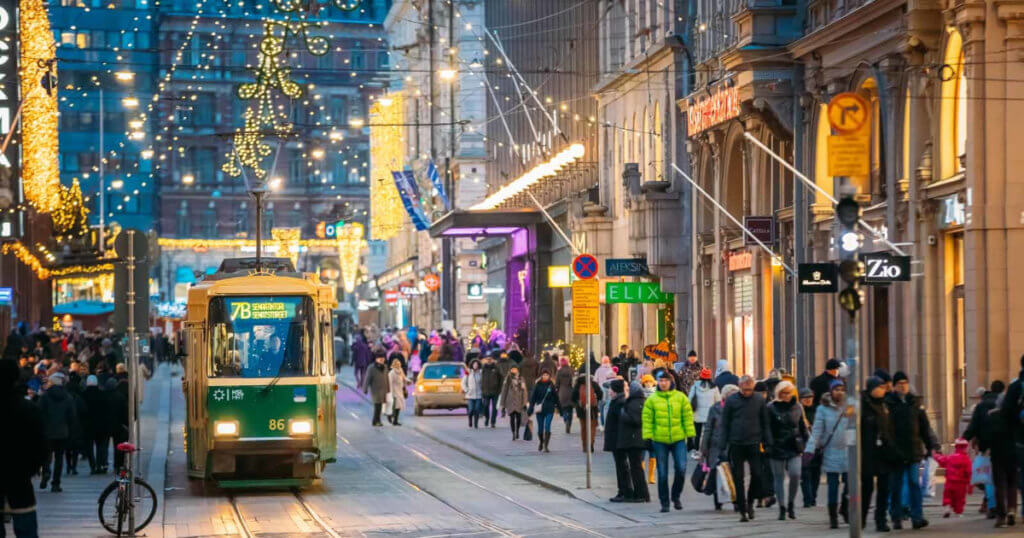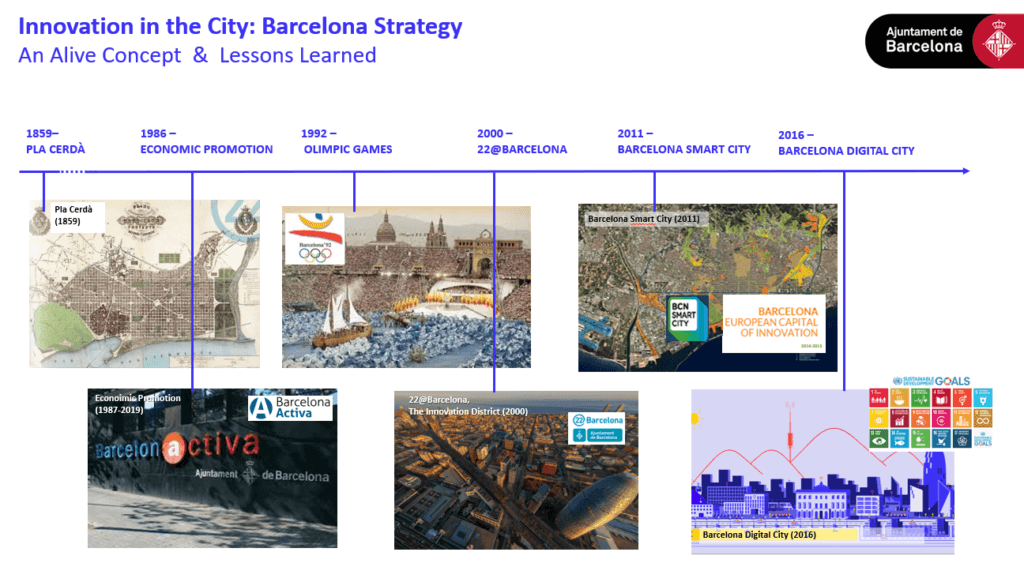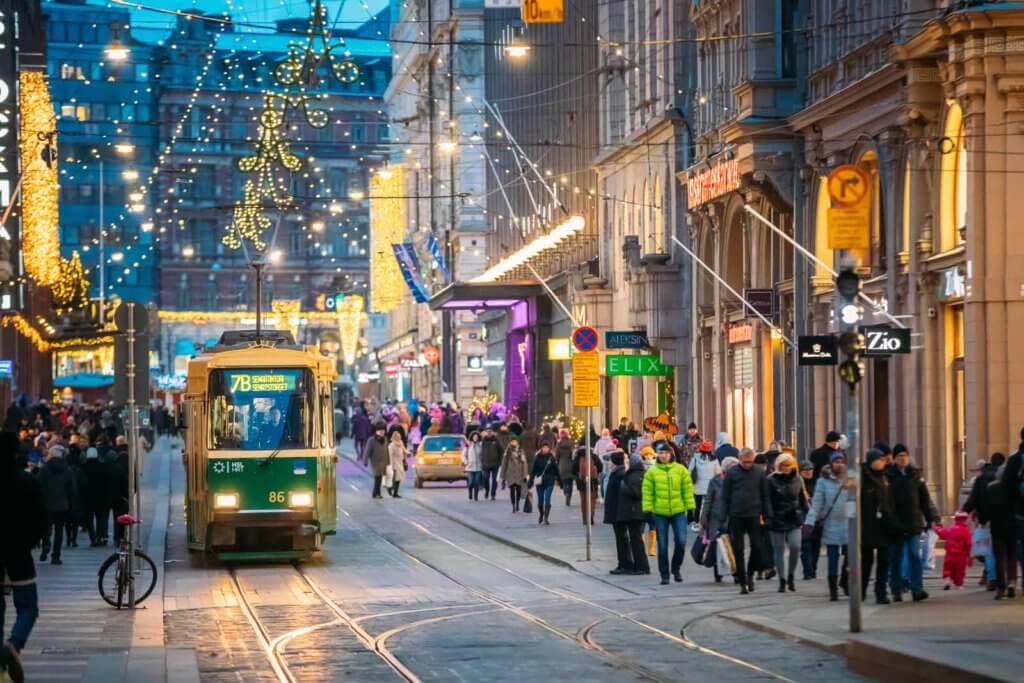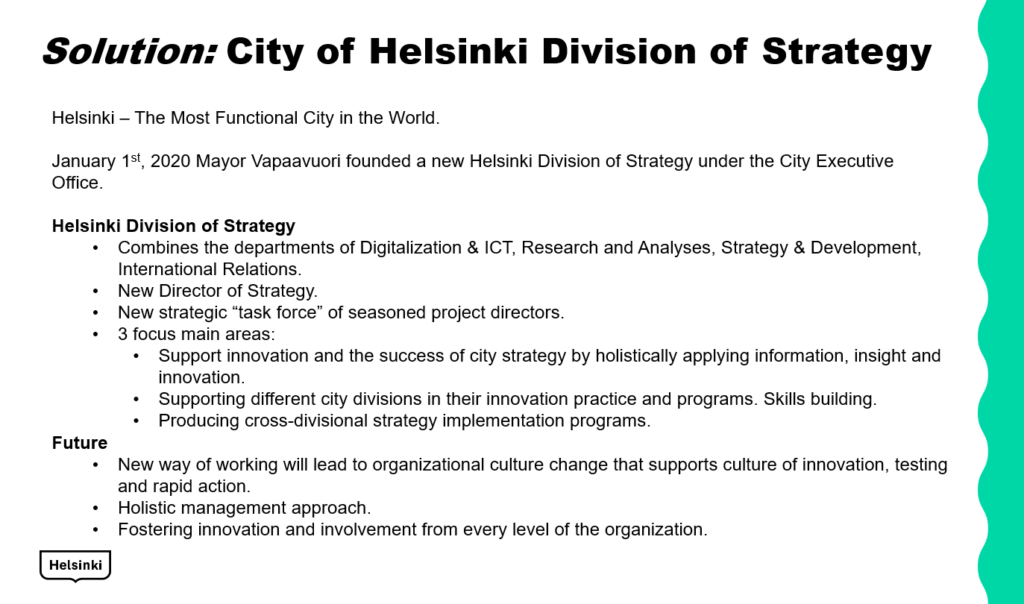
Speaking with dozens of global city leaders, common smart city themes for 2020 have already begun to emerge: Data, Citizen Engagement, Internal Governance, and Change Management. However, for many cities, these have emerged after a journey of many pilots, mistakes, and innovation. During our Smart Cities CIO Summit at Harvard, these themes were eloquently illustrated by speakers from Barcelona and Helsinki—two leading smart cities that have taken the leap from “project to strategy.” Here’s how these two cities took different approaches to develop successful smart city strategies.
Barcelona, Spain: A Smart City Strategy that Includes Innovation for the People
When city leaders talk about innovation, the term is often equated to technology. However, as Anna Majo of the Barcelona City Council told Harvard CIO Summit attendees, innovation is not a new concept. Barcelona has always been a source of innovation from architect Antoni Gaudi to artist Salvador Dalí to football star Lionel Messi—each moving progress forward in their respective fields.
That said, technology is changing everyday life for citizens across the world, and the government is tasked with directing that innovation into positive change for its citizens.
For Barcelona, it has been a journey of many strategies that continue to develop dating back to Pla Cerda in 1859 to the more recent smart city project strategies, including 22@ Barcelona, Smart City Barcelona, Barcelona Digital City.

22@Barcelona 2000 Onwards
Hosting the Summer Olympics in 1992 created an opportunity for the city of Barcelona to improve its technology infrastructure. The result was Districte de la Innovació (Innovation District), known as 22@ Barcelona—a massive initiative that transformed a run-down industrial district into a hub for startups and technology. Districte de la Innovació was created using a three-step process: Urban Transformation, Economic Transformation, and Social Transformation.
It was important to Majo and her team that citizens be empowered by technological innovation, which includes feedback, training, and investing in local neighborhood projects that would have a big impact on the community. In addition, an open-source platform was launched to encourage “digital democracy.”
Smart City Barcelona 2011 Onwards
Developing a smart city required a three-step process: improve infrastructure, use the new technology to drive economic benefits, and ensure that citizens are a key component of decision making.
At the time, Barcelona had a number of fragmented programs related to technology, events, citizens, and the economy. Barcelona Smart City takes those fragmented ideas and applies the strategy, vision, and team behind them to see ideas through to fruition.
Today, the key functions of Barcelona’s smart city strategy include i.lab, a program that fosters urban sustainability and innovation through open competitions. Innovation consultants throughout the city identify problems, find solutions, run trials, and navigate public procurement, making the city’s evolution a community affair.
Barcelona Digital City 2016 Onwards
Barcelona’s Digital City initiative, meanwhile, strives to bring citizens together through a series of programs that promote digital ethics, innovation, and empowerment. Programs include the aforementioned i.lab, a local social currency called Rec, a science and technology outreach program for kids called Steam BCN, 5G installation, and more.
It is this community-driven innovation strategy that earned Barcelona the title of “iCapital,” or European Capital of Innovation in 2018.
Majo shared her top six takeaways from her experience driving strategy in Barcelona:
- Needs create opportunity
- Be ambitious and brave
- Engage the community
- Maintain an open governance
- Public project management is key
- Communicate and reflect on what you’ve learned – constantly be improving and redesigning.
Helsinki, Finland: Smart City Strategies Succeed by Creating a Culture of Innovation
Sanna-Mari Jantti of the City of Helsinki understands that a successful smart city is one driven by a culture of innovation. That’s why in order to turn Finland’s capital into “the most functional city in the world,” Helsinki leaders eliminated silos within the innovative process. This was accomplished by combining several city units charged with innovation and strategy.
They began with a basic framework, as most governments do, with silos and redundancy among responsibilities. To achieve faster results, they needed to re-organize resources in order to support data, analysis, etc., train employees to develop innovation and strategy skills in the core organization, and build an organizational culture that supports innovation at every level.
So how do you transform your standard bureaucratic system into a well-oiled smart city innovation machine? Create the Helsinki Division of Strategy.
Now, the director of strategy reports directly to the city manager and has staff in each of the city departments. This new process allows for top-level buy-in and departmental champions, which are key to agility.
Helsinki trains its officials and key staff in artificial intelligence and other technologies currently impacting citizens, as well as opportunities they present.
This training and bureaucratic agility have allowed Helsinki to adapt its strategies according to community needs, demands, and as new technology becomes available. As a result, the city has topped a number of reports that compare smart cities across the world, including Best in Smart Tourism, Best Digital Mobility Services, best smart neighborhood (Kalasatama), and most locally connected startup ecosystem.
There are many different approaches that cities can take to develop a successful smart city strategy. Barcelona and Helsinki are prime examples of cities that understand that Smart City strategies are more of a journey that develops over time and requires an agile approach.



